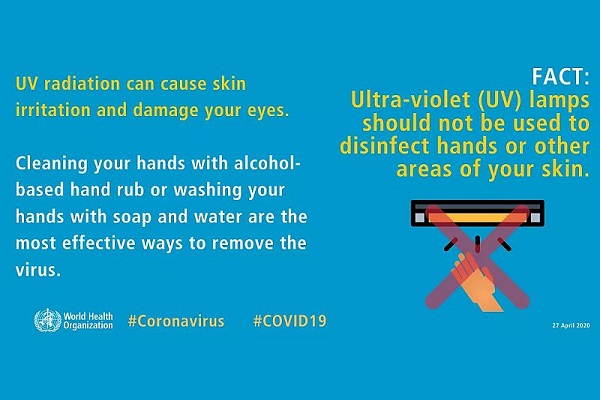With the global shortage of hand sanitizers, many people have turned to “natural hand sanitizers”-ultraviolet lamps. During the coronavirus epidemic, ultraviolet lamps are undoubtedly second only to toilet paper, hand sanitizer and other necessities, so can it really kill the new coronavirus? Will improper use cause any harm to human body?
The International Ultraviolet Association said that UV is a useful technology that has been tested for 40 years and has made great contributions to clean water and air. Many consumer devices are also disinfected with ultraviolet light, such as self-cleaning ultraviolet light kettles and ultraviolet light-emitting mobile phone cases, which can clean your dirty mobile phone.
However, it should be noted that in the fight against SARS-CoV-2 (that is, the virus that causes COVID-19), ultraviolet equipment is at risk, especially for skin.

There are currently three types of ultraviolet rays, A, B, and C. The first type is ultraviolet A (UVA). Most of the ultraviolet rays irradiated on the surface of the earth belong to this category. It can penetrate our skin, cause skin aging, and appear wrinkles and spots on the surface.
The second type is ultraviolet B (UVB), which damages the DNA of the skin, causes sunburn, and may also cause skin cancer. But recent research shows that ultraviolet A may also cause cancer. Rubbing sunscreen on the skin can block UVA and UVB.
The third type is ultraviolet C (UVC). The wavelength of ultraviolet C is shorter and more dangerous. It can kill human and virus genetic material. Fortunately, we will not be exposed to ultraviolet C, because the earth has an ozone layer to block ultraviolet C.
The principle of ultraviolet disinfection and sterilization is to use high-energy ultraviolet light to break the DNA double helix, so as to inactivate bacteria and viruses. To achieve effective sterilization and disinfection by ultraviolet rays, certain requirements must be met. Attention must be paid to the wavelength, irradiation dose and time of the ultraviolet light source, that is, it must be deep ultraviolet light in the UVC band below 280nm, and a certain irradiation dose and time must be met for different bacteria and viruses , Otherwise it cannot be inactivated.
The National Academy of Science, Engineering and Medical Sciences (NASEM) reported that ultraviolet light may kill coronavirus. “Ultraviolet light has been proven to destroy other coronaviruses, so it may work on this new coronavirus,” the website wrote. This includes the deadly Middle East Respiratory Syndrome Coronavirus, also known as MERS-CoV and severe acute respiratory syndrome-associated coronavirus SARS.
However, there is an important point to note here. NASEM emphasized: “Ultraviolet rays can damage human skin, so it should only be used on objects or surfaces.” This means that you should not use ultraviolet rays as a hand sanitizer, and you should stick to soap Wash your hands with water (follow the correct hand washing guidelines), or use alcohol-based hand sanitizer without soap and water.
WHO agrees with this and reports on its coronavirus webpage that people should not use ultraviolet lamps to disinfect hands or other skin parts because ultraviolet radiation “irritates the skin and damages the eyes.”
